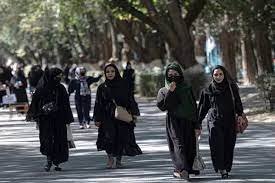In a recent decision, the Iranian government has enforced a sweeping ban on the teaching of foreign languages, including English and Arabic, in kindergartens and primary schools. The ban, which took immediate effect, aims to prioritize the development of Iranian identity among young children.
Massoud Tehrani-Farjad, an official from the education ministry, explained, “The teaching of foreign languages is prohibited in kindergartens, nursery schools, and primary schools because, at this age, the Iranian identity of the child is being formed.” This statement was reported by the IRNA news agency. The ban on English in primary schools had already been implemented in 2018, with the subject only being introduced at the secondary school level.
Tehrani-Farjad emphasized that the ban encompasses languages beyond English, including Arabic. It reflects a broader initiative to maintain and strengthen Iranian linguistic and cultural identity. Persian is the official language in Iran, although it bears influences from Arabic, French, and English.
This recent decision to ban foreign language instruction aligns with the Iranian government’s previous moves to reduce the dominance of the English language. In June 2022, the Ministry of Education signaled its intentions to introduce a trial program to teach French in schools across the country, aiming to diversify foreign language instruction and diminish the exclusive role of English.
The Iranian government’s educational policies have encountered criticism and controversy in recent months. In September, a ban was imposed on Iranian or dual-national students attending international schools, requiring them to follow the country’s national curriculum. This decision resulted in a significant decline in student enrollment in some international schools in Tehran, including those offering French and German language instruction.
Iran’s measures to reconfigure foreign language education reflect the government’s commitment to preserve and emphasize its cultural and linguistic identity among younger generations. While this policy aims to strengthen Iranian identity, it has sparked discussions and concerns about the limitations it may impose on students’ access to global language skills and perspectives.
Iran has taken a significant step by implementing a comprehensive ban on the teaching of foreign languages, including English and Arabic, in kindergartens and primary schools. The government’s rationale for this decision is to emphasize the formation of Iranian identity in young children. This ban extends beyond the previous prohibition on teaching English in primary schools and encompasses various foreign languages.
Massoud Tehrani-Farjad, an official from the education ministry, explained the basis for this ban, stating that foreign language instruction is prohibited in establishments like kindergartens and primary schools. The reason behind this restriction is the belief that a child’s Iranian identity is significantly shaped during their early years.
This policy adjustment reflects the government’s broader efforts to reduce the dominance of English and diversify foreign language education. For instance, in June 2022, the Ministry of Education announced plans for a trial program to introduce French language instruction in schools throughout the country. This initiative aimed to break the monopoly of the English language in the educational system.
The Iranian government has encountered some controversy regarding its educational policies. In September, it prohibited Iranian or dual-national students from attending international schools, requiring them to follow the national curriculum. Consequently, certain international schools in Tehran, including those offering French and German language instruction, witnessed a decrease in student enrollment.
Iran’s decision to curtail foreign language instruction in schools underscores its commitment to preserving and reinforcing Iranian linguistic and cultural identity, particularly among younger generations. However, it has raised questions about the potential limitations on students’ access to global language skills and perspectives.














